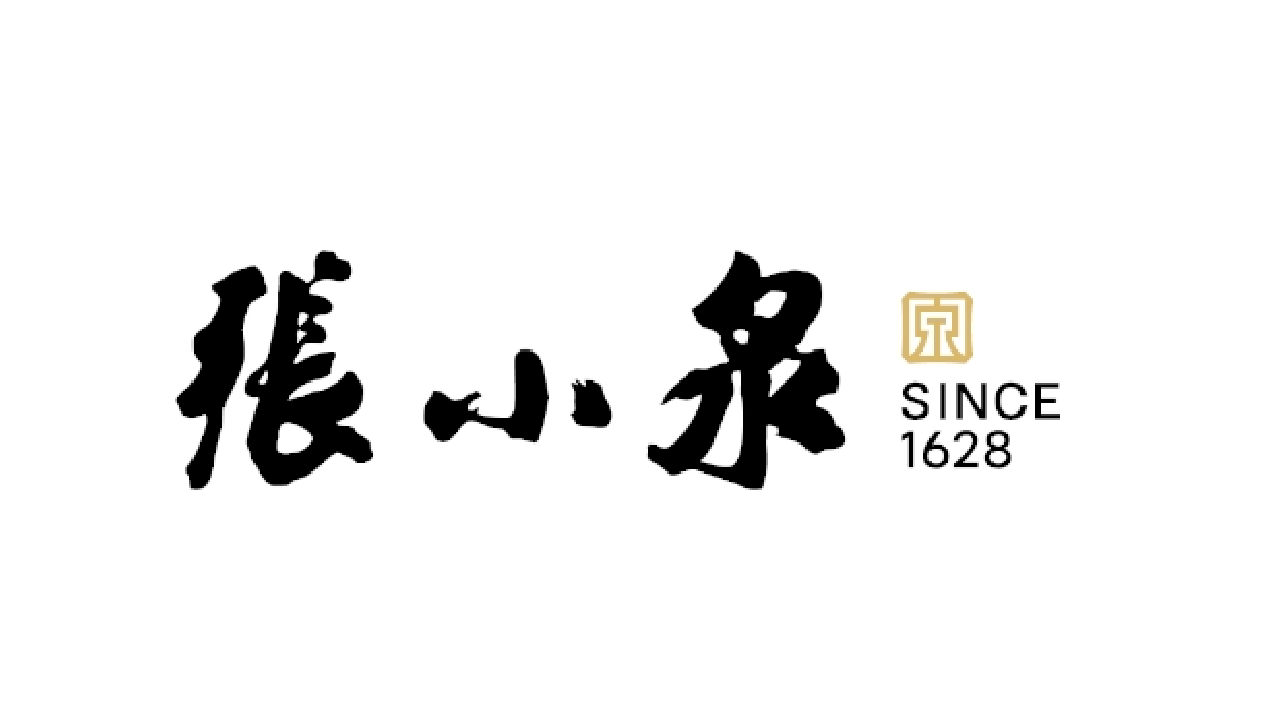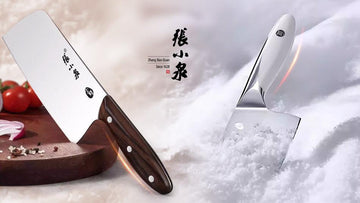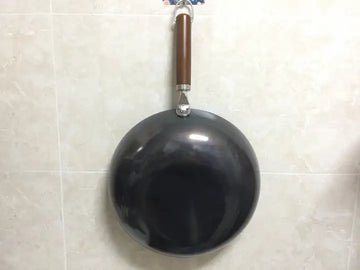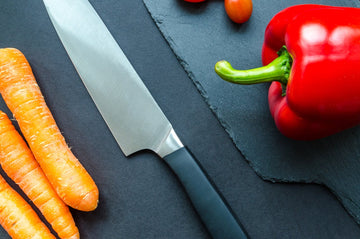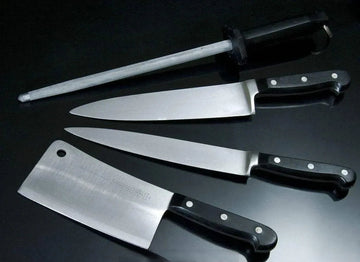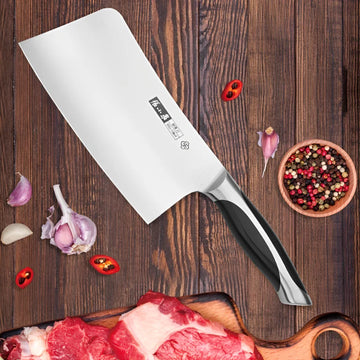Contents
Introduction
The Chinese cleaver, a staple in Asian kitchens for centuries, is increasingly finding its way into Australian homes and professional kitchens. As modern brands like Zhang Xiaoquan introduce contemporary versions to the Australian market, it's time to address common misconceptions about this versatile kitchen tool.
Understanding Chinese Cleavers
Chinese cleavers are distinguished by their:
-
Rectangular blade shape
-
Wide blade surface for food transfer
-
Straight cutting edge
-
Balanced weight distribution
-
Multifunctional design
Common Myths Debunked
Myth 1: Weight and Size Concerns
The Myth "Chinese cleavers are too heavy and bulky for everyday use."
The Reality Modern Chinese cleavers are well-balanced and appropriately weighted for regular use.
Facts About Weight
-
Standard weight range: 300-350g
-
Professional models: 350-400g
-
Lighter options available: 250-300g
Expert Insight "The weight of a Chinese cleaver is actually an advantage," explains James Liu, culinary instructor at TAFE NSW. "The blade does most of the work, reducing hand fatigue during long prep sessions."
Myth 2: Limited Usage
The Myth "They're only suitable for chopping and heavy-duty tasks."
The Reality Chinese cleavers come in three distinct types, each designed for specific purposes:
| TYPE | WEIGHT | PRIMARY USE | BEST FOR |
|---|---|---|---|
| Slice Cleaver (片刀) | 200-300g | Vegetables, boneless meats | Precision cuts |
| All-Purpose (文武刀) | 350-400g | General kitchen tasks | Daily cooking |
| Heavy Cleaver (砍骨刀) | 500g+ | Bones, tough materials | Butchering |
Professional Experience "I use my Chinese cleaver for everything from mincing herbs to breaking down poultry," notes Sarah Chen, head chef at a leading Sydney restaurant.
Myth 3: Safety Concerns
The Myth "Chinese cleavers are dangerous and difficult to control."
The Reality The design actually provides better control and safety features.
Safety Advantages
-
Wide blade protects fingers
-
Better visibility during cutting
-
Stable blade reduces accidents
-
Natural knuckle clearance
Myth 4: Steep Learning Curve
The Myth "You need professional training to use a Chinese cleaver."
The Reality Basic techniques are intuitive and can be learned through practice.
Learning Process
-
Basic cutting: A few days
-
Comfortable handling: 1-2 weeks
-
Advanced techniques: Several weeks of practice
-
Mastery: Ongoing development
Practical Tip "Start with simple vegetables and basic cuts. The weight and balance of the cleaver naturally guide proper technique," advises John Chen, cooking instructor at Melbourne's Asian Culinary Institute.
Myth 5: High Maintenance
The Myth "Chinese cleavers are difficult to maintain."
The Reality Modern Chinese cleavers from quality manufacturers like zhangxiaoquan require standard maintenance similar to any good knife.
Care Guide
-
Daily: Wash and dry thoroughly
-
Weekly: Basic honing
-
Monthly: Regular sharpening
-
Yearly: Professional service (optional)
Myth 6: Limited Applications
The Myth "Chinese cleavers are only for Asian cooking."
The Reality The design is versatile enough for any cuisine or cutting technique.
Universal Applications
-
Fine dicing and mincing
-
Vegetable preparation
-
Meat portioning
-
Herb processing
-
Ingredient transfer
-
Crushing aromatics
Myth 7: Material Quality
The Myth "Chinese cleavers use inferior steel."
The Reality Modern Chinese cleavers use high-quality steel formulations specifically engineered for kitchen use.
Steel Types Used in Modern Cleavers
| STEEL TYPE | CHARACTERISTICS | BEST FOR |
|---|---|---|
| 40Cr13 | Good edge retention, corrosion resistant | Daily home use |
| 70Cr17MoV | High hardness, excellent durability | Professional kitchens |
| 50Cr15MoV | Balanced performance, easy maintenance | All-purpose use |
| 90Cr18MoV | Premium grade, superior edge retention | High-end professional |
| 30Cr13 | Corrosion resistant, good toughness | Entry level |
Myth 8: Cost vs Quality
The Myth "Low price means poor quality."
The Reality The affordability of Chinese cleavers reflects manufacturing efficiency and scale, not quality compromise.
Price-Quality Relationship
-
Efficient design reduces production costs
-
High production volumes lower unit costs
-
Focus on functionality over marketing
-
Traditional manufacturing expertise
Myth 9: Durability Concerns
The Myth "Chinese cleavers don't last as long as Western knives."
The Reality Quality Chinese cleavers are built for longevity and daily professional use.
Durability Factors
-
Robust blade thickness
-
Quality heat treatment
-
Simple, solid construction
-
Proper steel hardness levels
Professional Experience "In our restaurant kitchen, our Chinese cleavers have outlasted most other knives," notes Michael Wong, Executive Chef at Golden Century, Sydney.
Myth 10: Storage Issues
The Myth "Chinese cleavers are too big to store conveniently."
The Reality One cleaver can replace multiple knives, actually saving kitchen space.
Storage Solutions
-
Magnetic wall strips
-
Knife blocks
-
Blade guards for drawer storage
-
Traditional wooden sheaths
Choosing Your First Chinese Cleaver
Purpose
-
Home cooking: All-purpose cleaver (文武刀)
-
Professional use: Task-specific selection
-
Specialty cooking: Based on cuisine focus
Important Features
-
Weight: 300-350g for general use
-
Balance: Pivot point near handle
-
Handle: Comfortable grip in wet conditions
-
Material: Quality steel with good edge retention
Recommended Specifications
| FEATURE | RECOMMENDATION | WHY IT MATTERS |
|---|---|---|
| Blade Length | 20-22cm | Optimal control |
| Blade Height | 8-10cm | Good knuckle clearance |
| Blade Thickness | 2.5-3mm | Balance of weight and agility |
| Handle Material | Wood or composite | Secure grip |
Frequently Asked Questions
Which Chinese cleaver is best for beginners?
Start with an all-purpose (文武刀) cleaver from a reputable manufacturer like Zhang Xiaoquan. Look for a model around 300-350g with a comfortable handle.
How do I maintain the edge?
Regular honing and occasional sharpening are sufficient. The straight edge is actually easier to maintain than curved Western knives.
Can I use it for fine cutting work?
Absolutely. With practice, a Chinese cleaver excels at precise cuts, from fine julienne to paper-thin slices.
Is it safe for home use?
Yes, when used properly. The wide blade actually provides better control and protection for your fingers than narrower knives.
Conclusion
Chinese cleavers represent a practical, versatile choice for Australian kitchens. Understanding their true nature helps dispel common misconceptions about weight, safety, and usability. Whether you're a home cook or professional chef, a quality Chinese cleaver can become an invaluable tool in your kitchen.
The key is choosing the right cleaver for your needs and learning proper technique. With the right approach, you'll find that Chinese cleavers offer an efficient, enjoyable way to prepare food.
